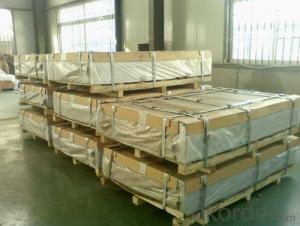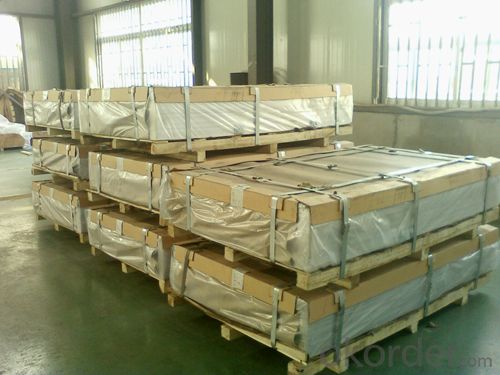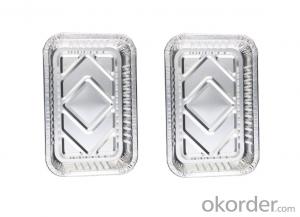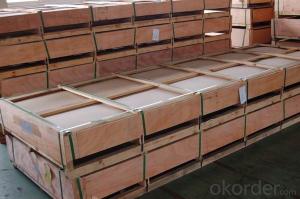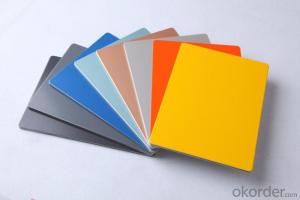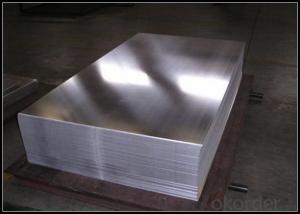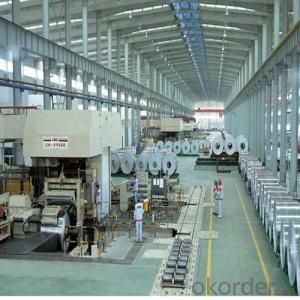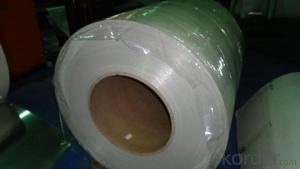Aluminum Sheets in Oregon for Cladding Building Facade
- Loading Port:
- China main port
- Payment Terms:
- TT or LC
- Min Order Qty:
- 5 m.t.
- Supply Capability:
- 10000 m.t./month
OKorder Service Pledge
OKorder Financial Service
You Might Also Like
Specification
1. Description of Aluminium Sheet for Cladding Building Facade
Coated Aluminium Coil/Sheet are of a wide range of colors, which gives wonderful apprearance no matter in residential and commecial constructions of great exhibition centers.
2. Application of Aluminium Sheet for Cladding Building Facade
(1).Interior: wall cladding, ceilings, bathrooms, kitchens and balconies, shutters, doors...
(2).Exterior: wall cladding, facades, roofing, canopies, tunnels,column covers , renovations...
(3).Advertisement: display platforms, signboards, fascia, shop fronts...
3. Feature of Aluminium Sheet for Cladding Building Facade
*Such coil is specially designed to replace aluminum ingot, due to the high export tax of aluminum ingot, the coil has better price than ingot.
*This type of coil can fit customer's remelting furnace just like ingot, no need to make any change to the production line that was previously used for ingot. The standard coil size and weight is very suitable for the feed gate of furnace.
*This type of coil causes less material wastage than ingot when remelted.
*Our coil is made directly from ore, no need to go though the ingot making process, quality is much better than other suppliers who use ingot scrap to make coil.
Be free from Oil Stain, Dent, Inclusion, Scratches, Stain, Oxide Dicoloration, Breaks, Corrosion, Roll Marks, Dirt Streaks and other defect which will interfere with use
4. Certificate:
SGS and ROHS(if client request, paid by client), MTC(plant provided), Certificate of Origin(FORM A, FORM E, CO), Bureau Veritas and SGS (if client request, paid by client), CIQS certificate
5. Image of Aluminium Sheet for Cladding Building Facade
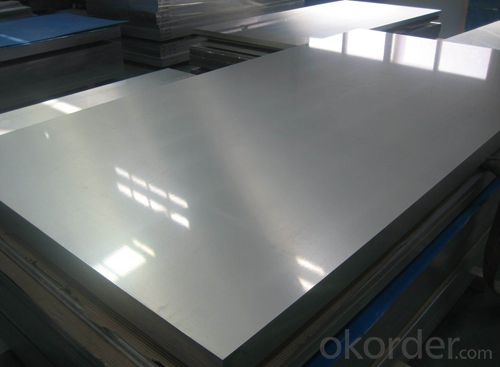
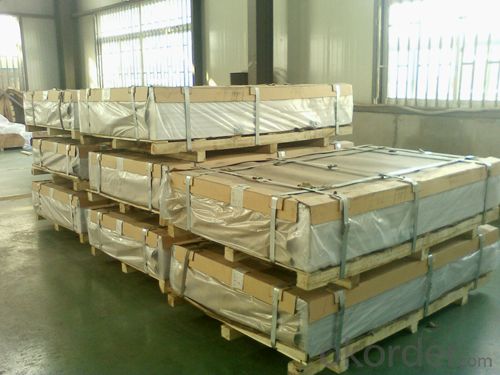
6. Package and shipping of Aluminium Sheet for Cladding Building Facade
eye to Sky
eye to wall
with wood pallet (wooded case also available)
7. FAQ
1) What is the delivery time?
Dpends on actual order, around 20 to 35 days
2)What is the QC system:
We have QC staff of 20 persons and advanced equipment, each production is with MTC traced from Aluminum ingot lot.
3) What market do you mainly sell to?
Aluminum sheet is equivalent to the floor? No, it may not the same with the floor. Garden floor usually smooth as a mirror, but the corrosion resistance, as well as slip resistance and hardness are over, but the aluminum plate. The pattern aluminum represents more "beauty", when you pass a busy city, raised his head will see skyscrapers, not knowing that the building exterior is aluminum sheet. You walk around at home, but I do not know refrigerators and microwave ovens, audio presentation is aluminum sheet, your furniture, cabinets, under your dazzled eyes wide open, you can see all aluminum sheets. I believe it, I tell you, your life aluminum plate everywhere.
Aluminum sheet luster appearance, corrosion resistance, high reflectance of light and heat, sound absorption performance is good, get a variety of colors by chemical and electrochemical methods. Therefore, aluminum sheet is widely used in industrial and civil construction of the roof, walls, doors, windows, frame, both interior and exterior panels, ceiling, ceiling, handrails, indoor furniture, container and store templates used in construction.
Aluminum corrugated sheet and the pressure plate: This is a new decorative material widely used in the world shake it to earth for wall decoration, can also be used for decorative roof, its surface by subsequent chemical treatment can have a variety of colors, good decorative effect, but also a strong ability to reflect sunlight. very durable when used in the air for 20 years without replacement, relocation of the removed corrugated sheet can continue to use.
Aluminum corrugated sheet is made of rolled aluminum-magnesium-manganese alloy sheet, the wavy cross section, is currently building a new type of building material widely used. Aluminum corrugated board is a light weight, high strength, fire, beautiful, shock, easy transportation and construction many advantages such as excellent building materials.
Aluminum corrugated sheet facade system is suitable for all kinds of building facades, architectural integration curve unique beauty, the ventilation, waterproofing, insulation, sound insulation and other building functions.
Corrugated aluminum curtain wall system unique classic sine smooth lines can exhibit complex and sophisticated strange effect. Various installation methods, namely horizontal, vertical or diagonal installation, not only with complex panel structure, more easily achieved between the curtain wall panels visually distinct layered effect; sunlight and shade to produce subtle effects can be large to create a charming and vivid visual experience on the area of the region.
With superior waterproof performance, excellent aluminum texture and improve technical support, aluminum corrugated board has been designated for the domestic Benz 4S exhibition dedicated external decorative corrugated board.
- Q: Can the aluminum sheets be used for heat dissipation purposes?
- Yes, aluminum sheets can be used for heat dissipation purposes. Aluminum is known for its excellent thermal conductivity, meaning it conducts heat efficiently. This makes it an ideal material for dissipating heat and transferring it away from a heat source. Aluminum sheets can be used in various applications such as heat sinks, cooling panels, and heat exchangers to effectively dissipate heat and prevent overheating. Additionally, aluminum is lightweight, corrosion-resistant, and easy to work with, making it a popular choice for heat dissipation in various industries including electronics, automotive, and aerospace.
- Q: What is the main influence of the spacing?What are the main effects of spacing?
- Thermal explosion is related to a lot of factors. As to how much impact the lining board has on the thermal explosion, it's really impossible to speak of it. I think it has very little influence
- Q: What is the thickness of the aluminum sheets?
- The thickness of the aluminum sheets can vary depending on the specific product or application. Aluminum sheets are available in a wide range of thicknesses, typically ranging from 0.006 inches (0.15 mm) to 0.25 inches (6.35 mm) or even thicker. The appropriate thickness will depend on the specific requirements and intended use of the aluminum sheet.
- Q: Can aluminum sheets be used for chemical pumps?
- No, aluminum sheets are not suitable for chemical pumps as they are not resistant to corrosion from many chemicals.
- Q: How do i prepare the aluminium sheet to paint with oils on it?Do I have to buy special aluminium or any kind will work?
- Prep and clean with vinegar
- Q: What is the specific heat capacity of aluminum sheets?
- The approximate specific heat capacity for aluminum sheets is 0.897 J/g°C, indicating that to increase the temperature of 1 gram of aluminum by 1 degree Celsius, 0.897 joules of energy is needed. While the specific heat capacity may slightly differ based on the aluminum sheet's purity and specific alloy, this value serves as a fairly accurate approximation for the majority of commonly used aluminum sheets.
- Q: Can aluminum sheets be used for interior design purposes?
- Yes, aluminum sheets can definitely be used for interior design purposes. Aluminum is a versatile material that offers many benefits for interior design applications. It is lightweight, durable, and resistant to corrosion, making it ideal for various design elements such as wall coverings, ceiling panels, backsplashes, and room dividers. Aluminum sheets can be easily customized and fabricated into different shapes, sizes, and finishes, allowing for endless design possibilities. Additionally, aluminum is a sustainable and eco-friendly material, as it is highly recyclable. Its sleek and modern look adds a contemporary touch to any interior design project. Overall, aluminum sheets have become a popular choice for interior designers due to their functionality, aesthetics, and sustainability.
- Q: Can aluminum sheets be used in automotive applications?
- Aluminum sheets find their utility in automotive applications. This lightweight and sturdy material brings a multitude of advantages to the manufacturing of automobiles. It is widely employed in the creation of car bodies, hoods, doors, roofs, and various other components. By incorporating aluminum sheets into automotive applications, the overall weight of the vehicle can be reduced, thereby enhancing both fuel efficiency and performance. Moreover, aluminum boasts exceptional resistance to corrosion, making it well-suited for enduring harsh weather conditions and exposure to road salt. Additionally, aluminum can be easily molded and shaped, facilitating intricate designs and detailing on automotive parts. In summary, the utilization of aluminum sheets in automotive applications contributes to the creation of vehicles that are lighter, more fuel-efficient, and visually appealing.
- Q: Aluminum wiring can be a fire hazard because it can oxidize, or combine with oxygen..
- Well, aluminum oxide is Al2O3, right? So for every 2 aluminum atoms there are 3 oxygen atoms, So, if you have three moles of aluminum, you'll need 4 and a half moles of oxygen to react completely with the aluminum. One mole of oxygen atoms weighs 16 grams, so 4.5 moles weighs 72 grams, right? Now it could be that your teacher told you three point zero zero moles of aluminum to get you to use two significant figures, so if you've studied significant figures you may want to look up a more accurate number for the atomic weight of aluminum, and carry the calculation through to three significant figures. Otherwise, 72 is a fine answer.
- Q: Can aluminum sheets be anodized for added durability?
- Indeed, it is possible to anodize aluminum sheets in order to enhance their durability. Anodization involves an electrochemical procedure that generates a protective oxide layer on the aluminum surface. This layer not only improves the material's appearance, but also boosts its ability to resist corrosion, wear, and scratches. By undergoing anodization, aluminum sheets acquire a robust, long-lasting finish, rendering them highly suitable for a range of applications that necessitate durability, including construction, automotive, aerospace, and electronics industries. Moreover, anodized aluminum sheets can be dyed in various colors, enabling them to exhibit enhanced aesthetic appeal while retaining their durability.
Send your message to us
Aluminum Sheets in Oregon for Cladding Building Facade
- Loading Port:
- China main port
- Payment Terms:
- TT or LC
- Min Order Qty:
- 5 m.t.
- Supply Capability:
- 10000 m.t./month
OKorder Service Pledge
OKorder Financial Service
Similar products
Hot products
Hot Searches
Related keywords

